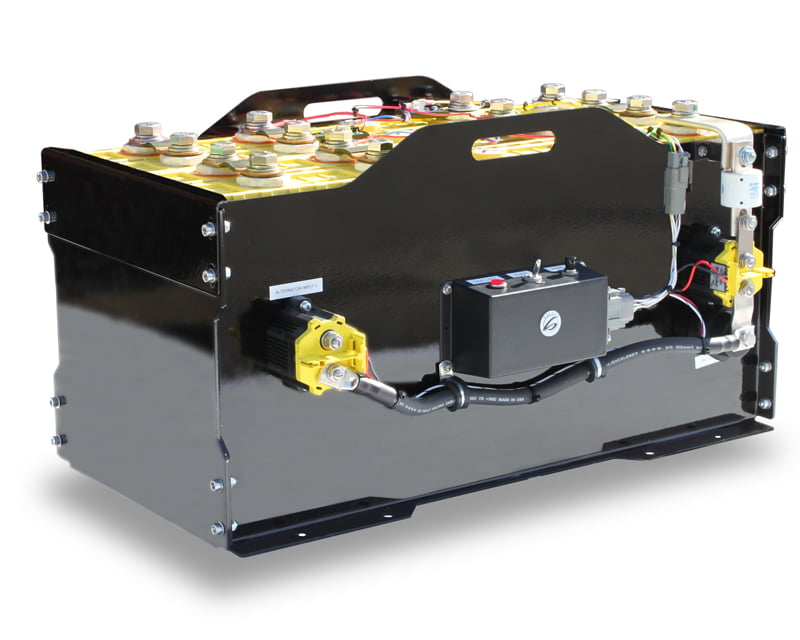Chapter 4: Trends in Materials Handling
A trend to increasingly narrower aisles in warehouses and distribution centers reflects the need to store more goods in the same amount of space than in the past (“cube utilization”). In addition to aisles shrinking, storage racks are being raised higher; meaning a lift truck working in these evolving environments must maneuver in smaller areas and lift loads higher.
Lift trucks also must be able to turn within tight spaces like the inside of half-full trailers where stacked goods reduce maneuvering space. In response, lift truck manufacturers are now making their products more compact. AC electric lift trucks designed specifically for narrow aisle applications are now serving areas where counterbalanced lift trucks cannot go. Electric lift trucks are most commonly used in indoor environments and regulated areas, such as refrigerators and freezers in grocery and food distribution centers. These are arenas where exhaust emissions in confined spaces would be a problem. Therefore, electric lift trucks excel in environments with medical and food products, which largely dominate the grocery industry, and in enclosed areas where toxic emissions like carbon monoxide would be a concern. Another strong niche for electric lift trucks is working around explosives and chemicals.
Evaluating only the market for 5,000-6,000 lb. capacity sit-down counterbalanced lift trucks, approximately 25 percent of the 80,000 of those lift trucks currently being used are electric. The remainder of the total are internal combustion lift truck models (LPG, diesel, gasoline, CNG, etc.), with LPG lift trucks owning the majority of that share.
Read The Full Series:
Chapter 1: The Concept of Total Cost of Ownership (TCO)
Chapter 2: AC Technology Compared to Internal Combustion
Chapter 3: Compressed Natural Gas (CNG)
Chapter 4: Trends in Materials Handling
Chapter 5: Voltage Levels Used in Electric Lift trucks Today
Chapter 6: Battery and Charging Systems
Chapter 7: Electric Braking and Energy Regeneration
Chapter 8: Emissions and Corporate Responsibility: A Major Problem for IC Lift Trucks
HCO Innovations is publishing this eight-part series as an in-depth comparative analysis and discussion on Compressed Natural Gas (CNG) Internal Combustion (IC) motors and Alternating Current (AC) Eletric lift truck engines, Comparison Analysis of CNG (IC) vs. AC Electric Lift Trucks, by Will Van Ness, VP of Fleet Management at HCO Innovations.
Comparison Analysis of CNG (IC) vs. AC Electric Lift Trucks (AC)
The materials handling industry continues to evolve at a rapid pace, particularly in the area of motive power propulsion. Tremendous technological advancements have been made over the past decade to directly address the rising cost of petrol (fossil fuels) along with stricter emission standards. Today’s MHE acquirers have more choices than ever when it comes to motive power propulsion and with the success seen amongst fleets utilizing alternative fuel sources such as lithium ion (LION) and Hydrogen Fuel Cell (HFC), the choices will most likely increase as time goes on. For the purpose of this discussion document, our focus will be on comparing AC Electric (AC) to Internal Combustion powered lift trucks (IC), specifically compressed natural gas (CNG).


